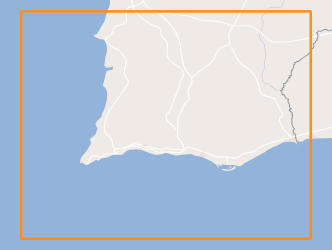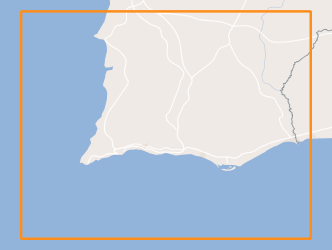Creation year
2009
162 record(s)
Type of resources
Available actions
Topics
INSPIRE themes
Keywords
Contact for the resource
orgNameSNIG
Provided by
Years
Formats
Representation types
Update frequencies
Service types
Scale
Resolution
geoDescCode
cartografia
geographicCoverage
geographicCoverageDesc
inspirecore
referenceDateRange
denominatorRange
resolutionRange
dataPolicy
openServiceType
dataType
dataFormat
-
Two beach profiles (P2 and P3) were collected at S. Pedro do Estoril, Cascais (Portugal) as part of shoreline monitoring exercises. Survey was conducted in a situation of low tide and these beach profiles run perpendicular to the shoreline. Profile location and a description of points used are available in profile data (.xls).
-
Serviço de Visualização (WMS) da Ortoimagem da ilha das Flores (2004). Ortoimagem da Ilha das Flores de 2004 obtida através do satélite QUICKBIRD com pixel de 60 cm.
-
Serviço de Visualização (WMS) do Ortofoto da ilha da Pico (2007). Ortofotomapas de 2009 resultantes do voo aerofotogramétrico de 2007 executado pela DSCIG, com pixel de 0,4 m.
-
Serviço de Visualização (WMS) do Ortofoto da ilha de Santa Maria (2005). Ortofotomapas de 2010 resultantes do voo aerofotogramétrico de 2005 executado pelo IFAP, através do protocolo com a DSCIG, com pixel 0,4 m.
-
Serviço de Visualização (WMS) do Ortofoto da ilha da Graciosa (2007) . Ortofotomapas de 2009 resultantes do voo aerofotogramétrico de 2007 executado pela DSCIG, com pixel de 0,4 m.
-
Cartografia digital topográfica na escala 1:10000, homologada pelo IGP em 2011. Cartografia elaborada pela Nível e fiscalizada pela Novageo. Fotografia aérea do IGP de 2007. Restituição e completagem de campo de 2008. Última revisão em Julho de 2009. Homologada pelo IGP em 2011.
-
Localização dos núcleos antigos, conjuntos urbanos e dos imóveis classificados e em vias de classificação do concelho de Loures, bem como as respectivas zonas de protecção e caracterização dos imóveis.
-

Within Portugal's National Biological Sampling Project (PNAB) a set of activities are conducted in the collection, management and use of biological data, collected from the registered commercial fleet in mainland Portugal (fisheries-dependent data) and several research surveys (independent fisheries data). These activities allow the assessment of the state of fishery resources, population structure, distribution and abundance of resources, diversity and dynamics of biological communities associated with the fishery resources and biological studies (growth, reproduction).This resource shows the geographic distribution of european hake abundancy index (nr. individuals/hour) registered during the CRUSTACEOS2008 campaign in June 2008.
-

Within Portugal's National Biological Sampling Project (PNAB) a set of activities are conducted in the collection, management and use of biological data, collected from the registered commercial fleet in mainland Portugal (fisheries-dependent data) and several research surveys (independent fisheries data). These activities allow the assessment of the state of fishery resources, population structure, distribution and abundance of resources, diversity and dynamics of biological communities associated with the fishery resources and biological studies (growth, reproduction).This resource shows the geographic distribution of atlantic chub mackerel abundancy index (nr. individuals/hour) registered during the DEMERSAL2008 campaign in September 2008.
-

Within Portugal's National Biological Sampling Project (PNAB) a set of activities are conducted in the collection, management and use of biological data, collected from the registered commercial fleet in mainland Portugal (fisheries-dependent data) and several research surveys (independent fisheries data). These activities allow the assessment of the state of fishery resources, population structure, distribution and abundance of resources, diversity and dynamics of biological communities associated with the fishery resources and biological studies (growth, reproduction).This resource shows the geographic distribution of blackmouth catshark abundancy index (nr. individuals/hour) registered during the CRUSTACEOS2008 campaign in June 2008.
